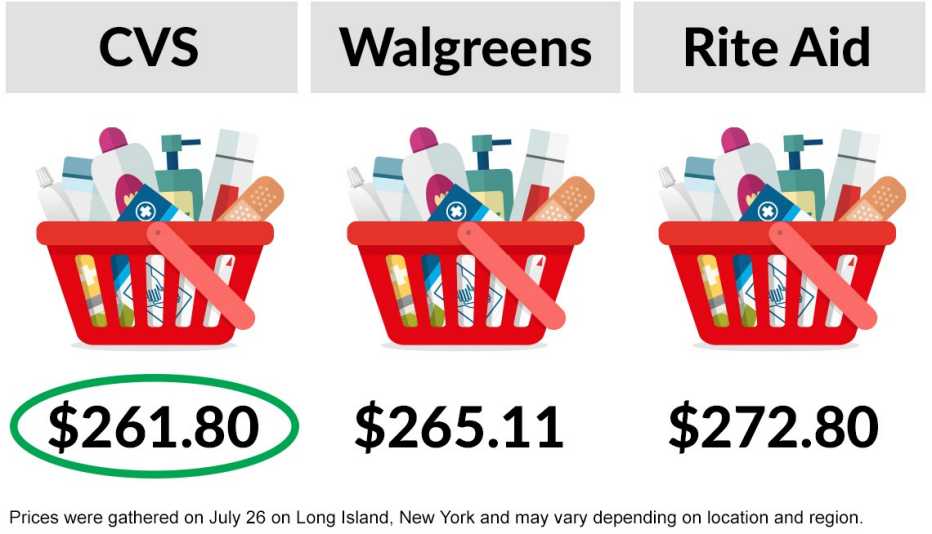AARP Hearing Center


Drugstores are a vital resource for many older adults, and it’s not just to fill prescriptions. You can load your cart with many necessities, including vitamins, toiletries and food, all under one roof. For most Americans, there's a CVS, Walgreens or Rite Aid store nearby and often more than one to choose from. (The chains operate about 20,000 drugstores combined in the U.S.)
But buyer beware. Prices vary from one chain to the next. Consumers need to comparison shop, but who has the time? Thankfully, we do. We shopped the aisles of CVS, Walgreens and Rite Aid to see which drugstore has the cheapest prices. We compared the prices for a basket of 20 brand-name items, excluding sales or discounts. The winner: CVS. Walgreens came in a close second, leaving Rite Aid as the costliest of the three, albeit by a small margin.
What’s in our cart at the drugstore?


“These are all big pharmacies, but some are better at negotiating with the brands,” says Trae Bodge, a shopping expert at TrueTrae.com, as to why CVS is cheaper. “CVS is my pharmacy of choice. The prices are better and it has one of the better loyalty programs.”
Beyond comparison shopping, an effective way to save whether you shop at CVS, Walgreens or Rite Aid is to sign up for their loyalty/rewards programs. You accumulate points that can be used to get money off in addition to customized coupons.
“No matter what pharmacy you are shopping at, if they have a loyalty program make sure to join it. It's definitely to your advantage to do so,” Bodge says. If you aren’t tech-savvy or don’t want to download an app, Bodge says to check the circulars and don’t toss your receipt after checking out. “CVS is known for its long receipts. Those receipts have really valuable coupons. If you are an in-store shopper, make sure to opt for the printed receipt,” she says.
The winner: CVS
Locations: Nationwide
Number of stores: 9,674
Shopping cart total: $261.80



































































More From AARP
Cheapest Groceries: Aldi, Walmart or Stop & Shop?
We shopped at Walmart, Aldi and Stop & Shop to find the best prices for your groceries.Staples You Should Always Buy On Sale
If they store well or freeze well, jump at the chance to buy on sale
12 Supermarkets With Senior Discounts
Here's one way to save on soaring food prices